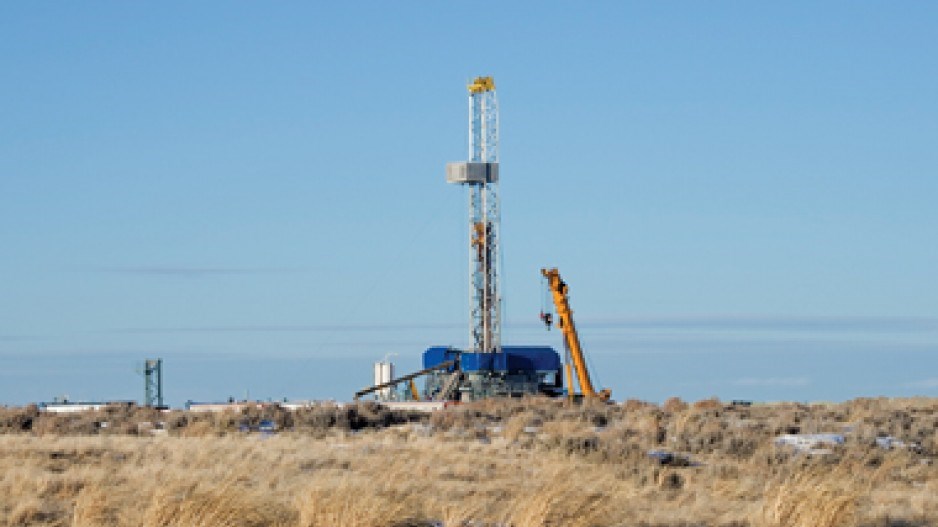Hydraulic fracturing in shale gas fields in northeastern B.C. caused 38 minor seismic events over a two-year period, including one significant enough to qualify as a minor earthquake, according to a new study by the B.C. Oil and Gas Commission.
Investigation of Observed Seismicity in the Horn River Basin was initiated in 2011, after Natural Resources Canada (NRCan) recorded "low-level seismic events" near gas fields in the Horn River Basin, where none had been measured prior to the commencement of fracking in the region around 2009.
The report follows on the heels of two other recent studies out of the U.S. and Britain that likewise concluded hydraulic fracturing in shale gas fields triggered mini-earthquakes. According to the study, "the investigation has concluded that the events observed within the remote and isolated areas of the Horn River Basin between 2009 and 2011 were caused by fluid injection during hydraulic fracturing in proximity to pre-existing faults." The seismic events ranged between 2.2 and 3.8 in magnitude on the Richter scale. A quake in the 3.0 to 3.9 range is significant enough to be felt but rarely causes damage. Only one of the recorded events was significant enough to have been felt by workers in the area. All epicentres of the tremors were within five kilometres of fracking operations. The study concludes that fracking-generated seismic activity caused no damage or injuries and suggests the oil and gas industry can minimize impacts by avoiding known fault zones and through mitigation measures, like reducing the pressure used in the fracking process.
"I think what the science is telling us is … that properly engineered, properly managed, we can do fracking in a responsible, safe way," said David Pryce, vice-president of operations for the Canadian Association of Petroleum Producers (CAPP).
Micro-quakes caused by hydraulic fracturing might be the least of worries for environmentalists, who are more concerned about the chemicals and vast amounts of water injected into the ground during the fracking process.
"Seismic activity is not something we've expressed concern over," said Joe Foy, national campaign director for the Wilderness Committee. "We believe that fracking is a huge uncontrolled experiment, and we have no idea what seismic activity caused by fracking may signal. All we know is there are some nasty chemicals being injected in huge amounts – along with huge amounts of water – and we just don't think anyone knows the long-term consequences of all this." •
What is fracking?
Hydraulic fracturing (fracking) and horizontal drilling are not new methods in gas and oil extraction but have become refined over the last decade as an economical way of extracting larger volumes of natural gas than through conventional drilling.
Conventional drilling typically involves vertical wells drilled directly into gas reservoirs. Fracking typically involves horizontal drilling, which allows for much larger areas to be tapped with fewer wellheads.
Although that makes for a smaller physical footprint, it poses a number of environmental concerns, including the chemicals and large amount of water used in the fracking process.
Fracking uses a mixture of water, chemicals and sand or ceramics that are forced under high pressure through horizontal bore holes at depths of two to three kilometres.
The pressure fractures shale rock, and the sand and chemical mixture helps keep small cracks open, while the natural gas trapped inside the shale is released and flows up and out of the well when the pressure is relieved. Fracking fluids typically remain in the ground.
The U.S. Environmental Protection Agency estimates that between 70 billion and 140 billion gallons of water are used annually in the fracturing of 35,000 wells in the U.S. alone.




